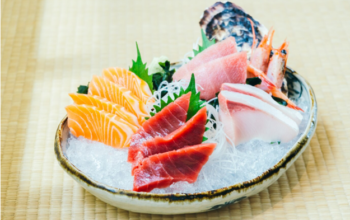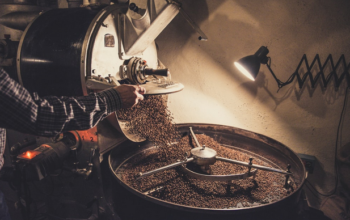Air-roasted kuki coffee is a type of coffee that is roasted using hot air instead of direct contact with a heat source. This method of roasting coffee beans was first patented in the United States in 1864 by Jabez Burns. Air roasting has several benefits over other methods of roasting coffee, including a more even roast, less smoke production, and more control over roast time and temperature.
Drum roasters and fluid bed roasters are the two primary categories of air roasters. While fluid bed roasters hang the beans in a heated air stream, drum roasters turn the beans in a large spinning chamber. Both types of air roasters can produce a high quality product, but each has its own advantages and disadvantages.
Drum Roasters
Drum roasters work by tumbling the beans in a large rotating chamber. The beans are roasted evenly as they come in contact with the hot air and walls of the chamber. Drum roasters typically have longer roast times than fluid bed roasters, but they can be easier to control. Additionally, drum roasters often have a cooling system that can help to prevent the beans from being over-roasted.
Fluid Bed Roasters
Fluid bed roasters suspend the beans in a hot air stream. This allows the beans to roast more evenly and quickly than in a drum roaster. Fluid bed roasters typically have shorter roast times than drum roasters, but they can be more difficult to control. Additionally, fluid bed roasters often do not have a cooling system, which means that it is more likely for the beans to be over-roasted.
Air-roasted coffee: The distinctiveness
Air-roasted coffee has a reputation for being more evenly roasted than coffee roasted using other methods. This is because the hot air circulates around the beans more evenly, resulting in a more consistent roast. Air roasting also produces less smoke than other methods, making it a good choice for roasters who are concerned about safety or who have asthma or other respiratory conditions.
However, air roasting can be more difficult to control than other methods, and it can be easy to over- or under- roast the beans. Additionally, air roasters typically have longer roast times than other methods, so they may not be ideal for those who are looking for a quick cup of coffee.
The benefits it offers:
- More even roast
- Less smoke production
- More control over roast time and temperature
The disadvantages it has:
- Can be difficult to control
- Can be easy to over or under roast the beans
- Longer roast times than other methods.
So which type of air roaster is right for you?
The answer depends on your needs and preferences. If you are looking for an evenly roasted coffee with less smoke production, air roasting may be the right choice for you. If you are looking for a quick cup of coffee, fluid bed roasters may be a better option. Ultimately, the best way to decide is to experiment with both types of roasters and see which one produces the results that you are looking for.
Why does Air-roatsed coffee taste better than the traditional grounded coffee?
Air-roasting produces a more uniform roast than do other processes. This is due to the fact that the hot air circulates around the beans more equally, resulting in a more consistent roast. Air roasting also produces less smoke than other methods, making it a good choice for those who are concerned about safety or who have asthma or other respiratory conditions.
How does Air-roasted coffee compare to traditional methods?
Air-roasted coffee has several benefits over other methods of roasting coffee, including a more even roast, less smoke production, and more control over roast time and temperature.
Endnote:
Overall, air-roasted coffee is a high quality product that has several advantages over other types of roasted coffee.
Related Posts












